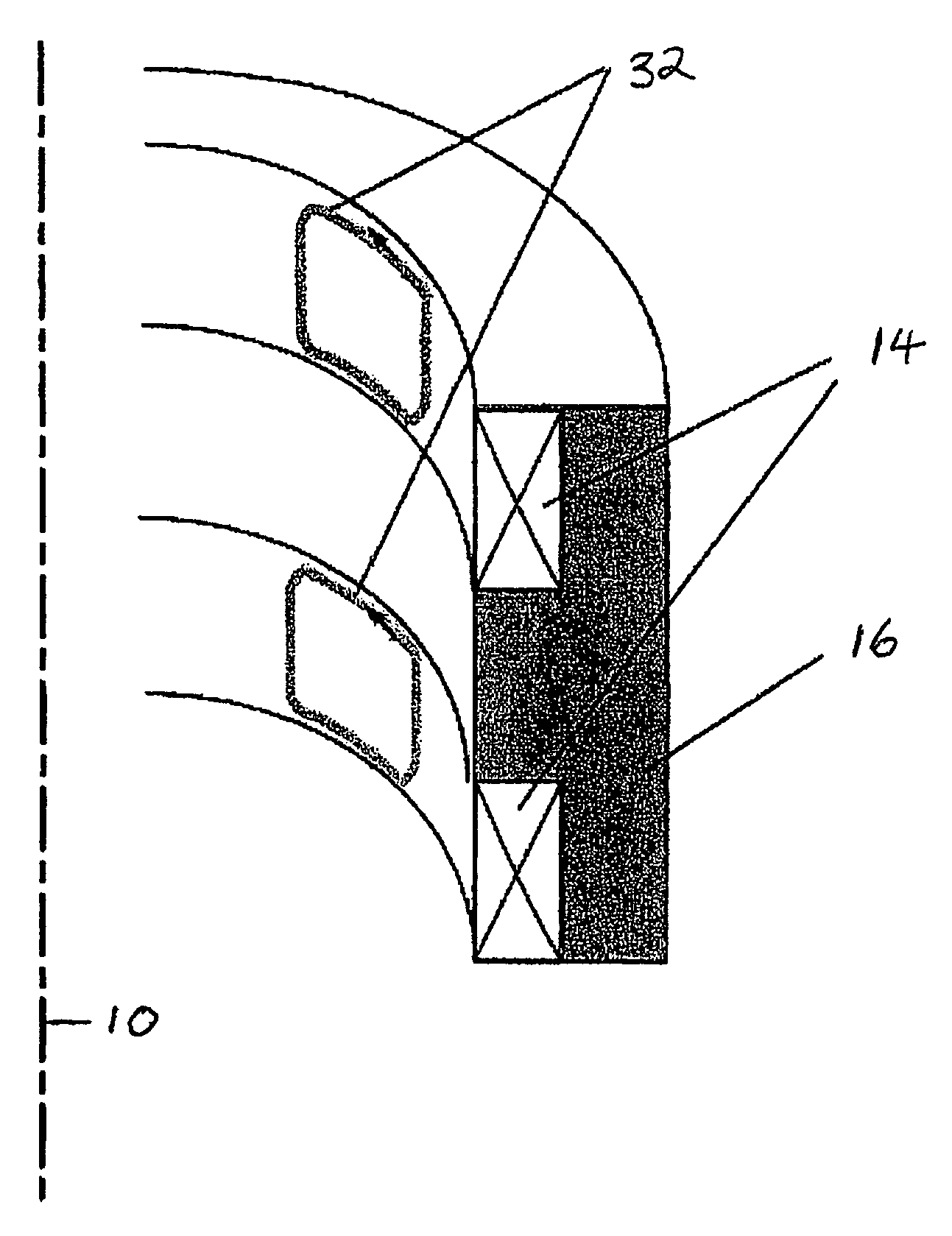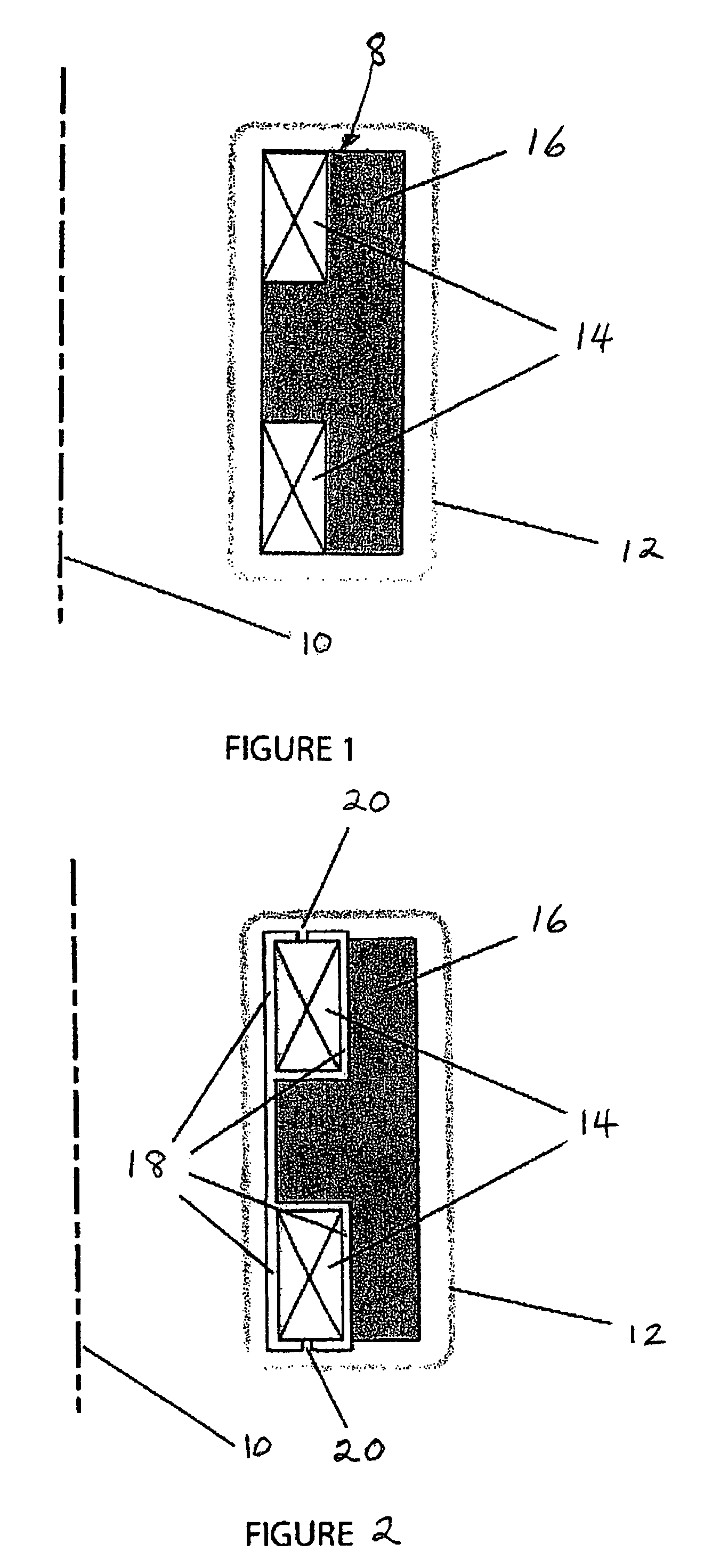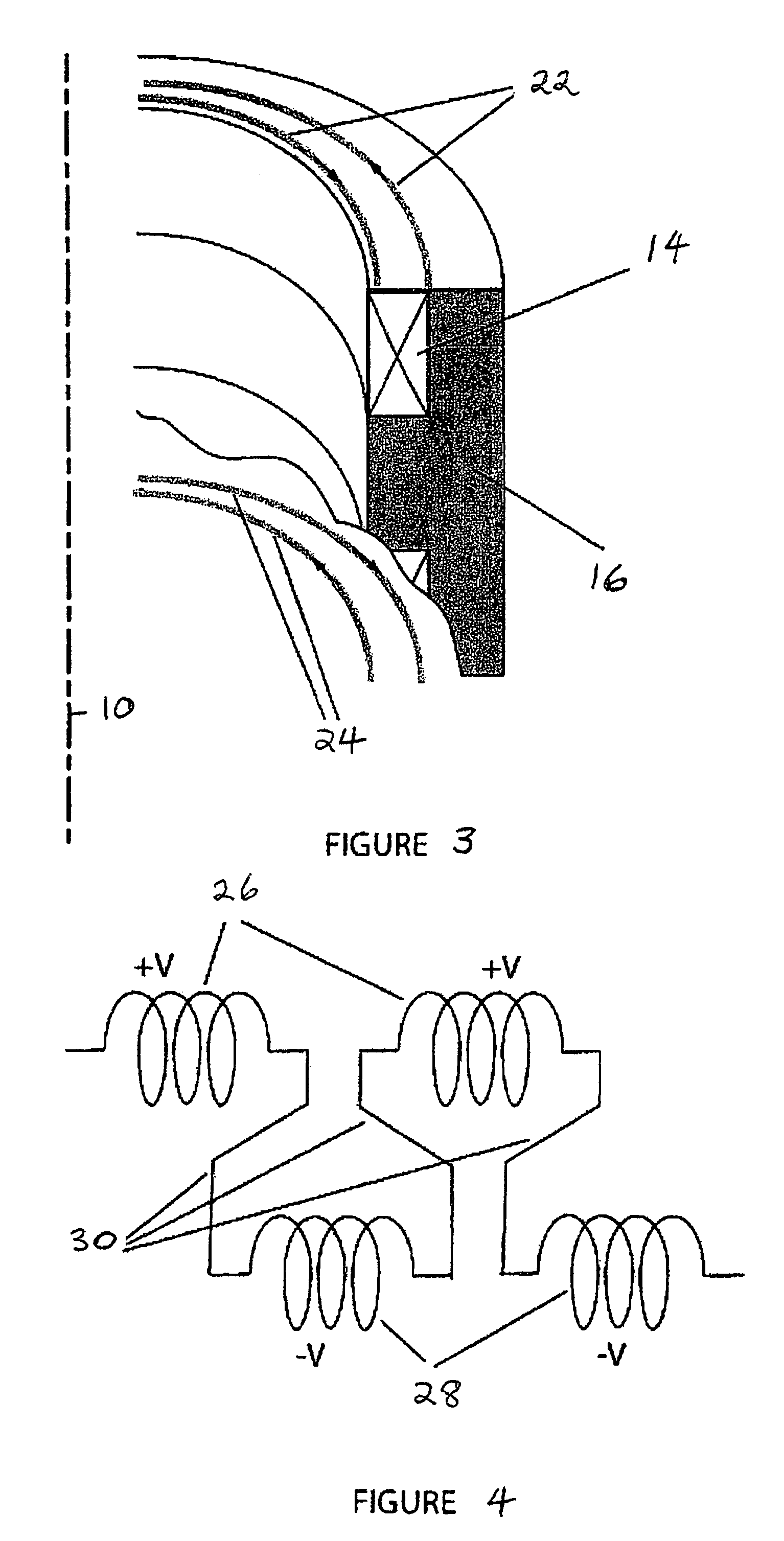Inductive quench for magnet protection
a quench system and magnet protection technology, applied in the field of quench systems, can solve problems such as substantial ac losses, and achieve the effect of effective conducting hea
- Summary
- Abstract
- Description
- Claims
- Application Information
AI Technical Summary
Benefits of technology
Problems solved by technology
Method used
Image
Examples
Embodiment Construction
[0021]The purpose of the invention is to decrease the reactive power required to drive AC magnetic fields that result in sufficient heating of a superconducting winding so that a quench is generated in a short time interval over a large fraction of the main superconducting coil.
[0022]Embodiments of the invention described below can be interpreted in terms of either magnetic fields or mutual inductances. In order to decrease the required energy in the AC magnetic field used to heat the main DC superconducting magnet, the AC magnetic fields are oriented, in some embodiments, normal to the steady state main field. By design then, the ratio of the energy in the AC magnetic field to that of the main DC magnetic field scales as (IAC / ISC)2, where IAC and ISC are the AC coils' and the main superconducting coil's currents respectively. Since the ratio IAC / ISC is much smaller than one, the energy in this configuration is much smaller than in conventional inductive heaters, where rippling osci...
PUM
| Property | Measurement | Unit |
|---|---|---|
| frequency | aaaaa | aaaaa |
| AC magnetic field | aaaaa | aaaaa |
| AC magnetic fields | aaaaa | aaaaa |
Abstract
Description
Claims
Application Information
 Login to View More
Login to View More - R&D
- Intellectual Property
- Life Sciences
- Materials
- Tech Scout
- Unparalleled Data Quality
- Higher Quality Content
- 60% Fewer Hallucinations
Browse by: Latest US Patents, China's latest patents, Technical Efficacy Thesaurus, Application Domain, Technology Topic, Popular Technical Reports.
© 2025 PatSnap. All rights reserved.Legal|Privacy policy|Modern Slavery Act Transparency Statement|Sitemap|About US| Contact US: help@patsnap.com



